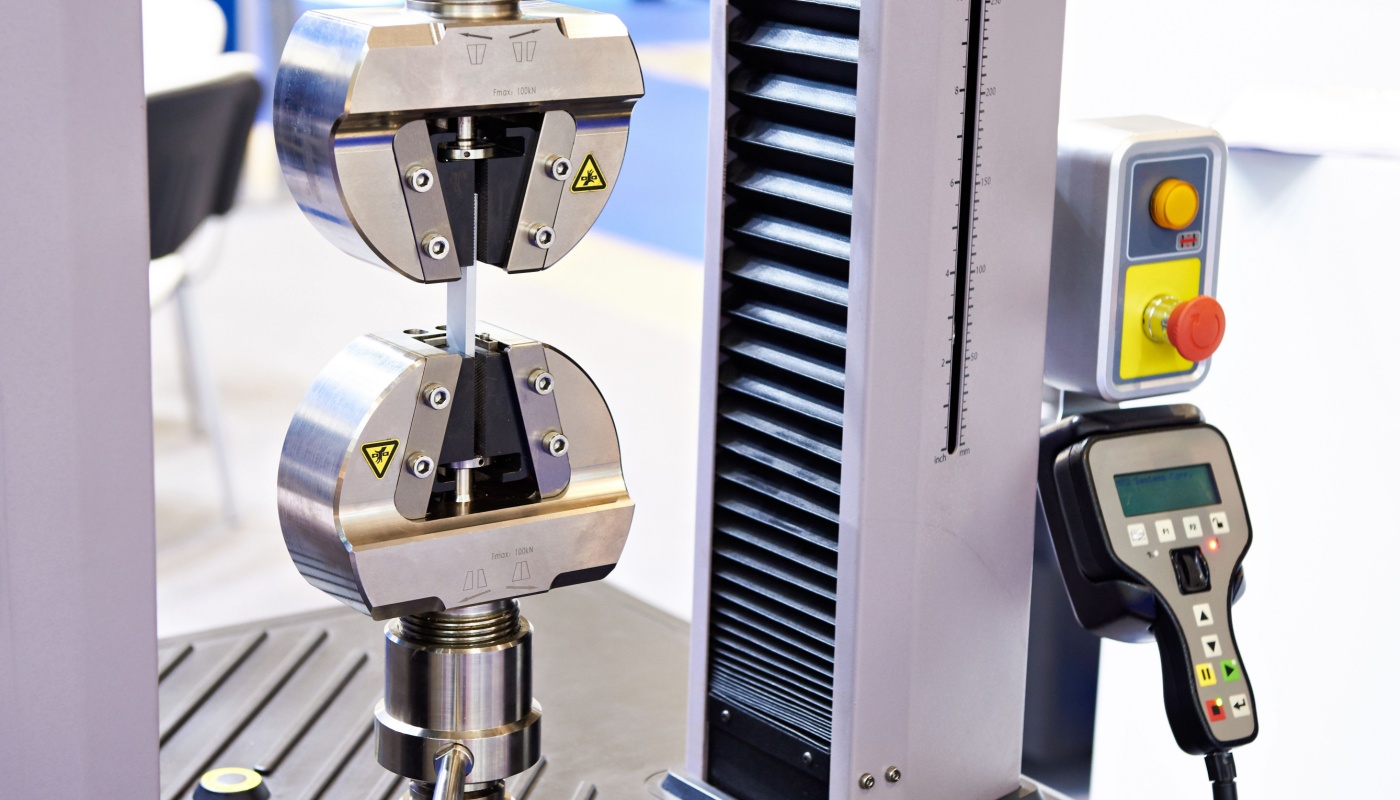Understanding Tensile, Flexural, and Compressive Testing for Product Performance
Estimated reading time: 7 minutes
Introduction
Every product — from automotive components to consumer goods — depends on one critical factor: the strength and reliability of the materials that make it.
Whether it’s a plastic housing, a rubber seal, or a metal bracket, understanding how materials perform under force is vital to ensuring safety, consistency, and customer satisfaction.
This is where mechanical testing comes in.
Mechanical testing evaluates how a material responds to stress, strain, and deformation. By applying controlled forces such as tension, compression, or bending, engineers can determine key mechanical properties that predict real-world performance.
At GPTesting, our ISO/IEC 17025-accredited mechanical testing lab helps manufacturers measure, validate, and document these properties with precision — ensuring that every material used in production meets stringent OEM specifications.
In this guide, we’ll break down three of the most important tests used across industries:
- Tensile Testing
- Flexural (Bending) Testing
- Compressive Testing
Why Mechanical Testing Matters
Mechanical testing forms the foundation of product validation. These tests reveal how materials behave when subjected to everyday stresses — from pulling and bending to squeezing and breaking.
For manufacturers, the insights are invaluable:
- Design Optimization: Select the right materials for performance and cost efficiency.
- Quality Assurance: Verify that incoming materials meet specification requirements.
- Safety Compliance: Ensure materials meet regulatory and OEM durability standards.
- Product Longevity: Predict how components will perform after years of use.
Without proper testing, even small variations in material properties can lead to premature failures, warranty claims, and brand reputation loss.
That’s why OEMs and suppliers rely on accredited labs like GPTesting to generate data that’s traceable, repeatable, and recognized industry-wide.
1. Tensile Testing: Measuring Strength and Elasticity
What Is Tensile Testing?
A tensile test measures how a material reacts to being pulled apart. The goal is to determine how much force it can withstand before it breaks — and how it behaves in the process.
During the test, a specimen is placed in a tensile testing machine and pulled from both ends at a controlled rate. Sensors measure the load (force) and elongation (stretch) until the material fractures.
Key Properties Measured
| Property | What It Means | Why It Matters |
|---|---|---|
| Tensile Strength | Maximum stress the material can withstand before failure. | Indicates material toughness and load capacity. |
| Yield Strength | The point where permanent deformation begins. | Determines safe load limits for design. |
| Elongation at Break | How much the material stretches before breaking. | Reflects flexibility or ductility. |
| Modulus of Elasticity (Young’s Modulus) | The ratio of stress to strain in the elastic region. | Measures stiffness and deformation resistance. |
Why Tensile Testing Is Critical
- Identifies weak spots and material inconsistencies early.
- Ensures materials can withstand manufacturing and service loads.
- Compares performance between material suppliers.
- Validates compliance with ASTM and ISO standards.
Common Standards Used:
- ASTM D638 (Plastics)
- ASTM E8 (Metals)
- ISO 527 (Plastics)
At GPTesting, we perform tensile testing across metals, polymers, rubbers, composites, and coatings, providing precise data used for quality control, research, and design validation.
2. Flexural Testing: Understanding Stiffness and Bending Behavior
What Is Flexural Testing?
Flexural testing, also called bending testing, measures how a material resists deformation under load.
The most common method is the three-point bend test, where a specimen is supported at two ends and loaded in the center until it bends or breaks.
Key Properties Measured
| Property | Description | Significance |
|---|---|---|
| Flexural Strength (Modulus of Rupture) | Maximum stress before fracture in bending. | Predicts ability to withstand bending or structural loads. |
| Flexural Modulus (Stiffness) | The ratio of stress to strain within the elastic region. | Indicates rigidity and deflection resistance. |
| Flexural Strain | Deformation or deflection under load. | Reveals how materials behave under bending stress. |
Applications of Flexural Testing
- Automotive: Dashboards, panels, and trim components.
- Aerospace: Lightweight composites and honeycomb structures.
- Construction: Plastic piping, flooring, and insulation panels.
- Consumer Products: Furniture, appliances, and electronics casings.
Common Standards
- ASTM D790 (Plastics)
- ISO 178 (Plastics)
- ASTM C393 (Sandwich Composites)
Flexural Testing in Action
Flexural testing doesn’t just measure if a material can bend — it shows how it bends.
Some materials show brittle fracture (snapping under low strain), while others demonstrate ductility (gradually yielding). Understanding this behavior helps designers balance stiffness and flexibility for optimal performance.
3. Compressive Testing: Measuring Resistance to Crushing or Buckling
What Is Compressive Testing?
A compressive test measures how materials behave under a load that reduces their size — essentially the opposite of a tensile test.
During testing, a specimen is placed between two plates and compressed until it deforms or fails. This data helps engineers determine how materials resist crushing, buckling, or permanent deformation.
Key Properties Measured
| Property | What It Represents | Why It Matters |
|---|---|---|
| Compressive Strength | Maximum stress before failure in compression. | Indicates material’s ability to resist crushing or deformation. |
| Elastic Modulus | Relationship between stress and strain in elastic range. | Determines stiffness and structural integrity. |
| Yield Point / Plastic Deformation | The stress where permanent deformation begins. | Predicts when materials lose shape or function. |
Common Applications
- Foams & Plastics: Packaging materials, automotive interiors.
- Rubbers & Elastomers: Seals, bushings, gaskets.
- Metals & Composites: Load-bearing parts and assemblies.
- Construction Materials: Bricks, concrete, structural panels.
Common Standards:
- ASTM D695 (Rigid Plastics)
- ASTM E9 (Metals)
- ISO 604 (Plastics)
Interpreting Results
Compressive testing provides valuable insight into:
- Material stability under load
- Deformation and recovery characteristics
- Density-performance relationships
- Product safety margins under compression
At GPTesting, compressive data is used by OEMs to confirm that materials can withstand assembly pressures, environmental loads, and in-service stresses.
How These Tests Work Together
While each test evaluates different forces, the true value of mechanical testing lies in the complete picture it provides.
| Test Type | Simulates | Reveals |
|---|---|---|
| Tensile | Pulling or stretching forces | Ultimate strength and ductility |
| Flexural | Bending or deflection | Stiffness and deformation behavior |
| Compressive | Squeezing or crushing | Structural integrity and stability |
By combining results from all three tests, engineers can:
- Identify potential failure modes under various loads
- Select appropriate materials for specific performance requirements
- Optimize part geometry for weight and strength balance
- Verify supplier consistency and compliance
These tests together form the backbone of product validation and OEM qualification programs.
Testing Equipment and Accuracy at GPTesting
At GPTesting, we use advanced universal testing machines (UTMs) equipped with:
- High-precision load cells for accurate force measurement
- Extensometers for real-time strain tracking
- Temperature-controlled chambers for environmental conditioning
- Automated data acquisition software ensuring traceability and repeatability
Every test is performed under the strict quality framework of ISO/IEC 17025, ensuring:
- Calibrated instrumentation
- Documented uncertainty of measurement
- Technician competency verified through training
- Repeatable and reproducible results across batches
The result?
✅ Reliable data.
✅ Reduced risk.
✅ Global confidence in compliance reports.
Interpreting Mechanical Test Results
Understanding test data is critical to translating lab results into real-world decisions.
Engineers and quality teams use mechanical testing data to:
- Compare materials for cost vs. performance
- Detect material variability between lots or suppliers
- Support finite element analysis (FEA) models
- Validate process changes or new formulations
Quality Managers depend on this data to:
- Support PPAP and supplier qualification documentation
- Demonstrate compliance with OEM requirements
- Identify trends or early signs of product degradation
GPTesting not only provides results but also helps clients interpret the data, offering technical guidance to improve designs and material selection.
Why Choose an ISO/IEC 17025-Accredited Lab
ISO/IEC 17025 accreditation isn’t just a certification — it’s your assurance of quality and competence.
When working with GPTesting, you benefit from:
- Global Recognition: Data accepted by OEMs and regulatory bodies.
- Verified Accuracy: Tests performed under audited, traceable systems.
- Expert Oversight: Certified technicians and engineers interpreting results.
- Reduced Risk: Confidence that results are defensible in audits or investigations.
Choosing an accredited partner means your materials are tested to the highest international standards — and your data holds up under scrutiny.
Industries That Depend on Mechanical Testing
| Industry | Common Applications |
|---|---|
| Automotive | Structural components, interior plastics, coatings, seals |
| Aerospace | Lightweight composites, fasteners, elastomer seals |
| Construction | Building materials, insulation, flooring |
| Consumer Goods | Packaging, housings, fasteners, plastic parts |
| Medical Devices | Tubing, molded components, polymers |
| Electronics | Enclosures, connectors, printed circuit materials |
Each industry faces unique environmental, mechanical, and safety requirements. GPTesting tailors test parameters, conditions, and reporting formats to meet these sector-specific needs.
Real-World Example: Improving Product Durability
A Tier 1 automotive supplier once approached GPTesting to resolve premature cracking in molded plastic housings.
Through tensile and flexural testing, we discovered that small changes in polymer composition led to reduced elongation and increased brittleness. After optimizing the resin mix and revalidating performance, the supplier achieved:
- 20% improved impact resistance
- Elimination of warranty claims related to cracking
- Full OEM reapproval within two months
This is the power of mechanical testing — turning data into actionable improvements.
Conclusion: Building Confidence Through Data
Tensile, flexural, and compressive testing are more than laboratory procedures — they’re essential tools for building confidence, compliance, and consistency.
When you partner with GPTesting, you’re not just getting test results — you’re getting insight:
- Which materials perform best for your design
- How your products will behave under stress
- What data your OEM customers expect to see
Our ISO/IEC 17025-accredited mechanical testing lab delivers data you can trust, helping you validate performance, reduce risk, and strengthen your competitive edge.
🔗 Book a consultation to learn more about GPTesting’s mechanical testing services and how we help manufacturers ensure performance that lasts.







